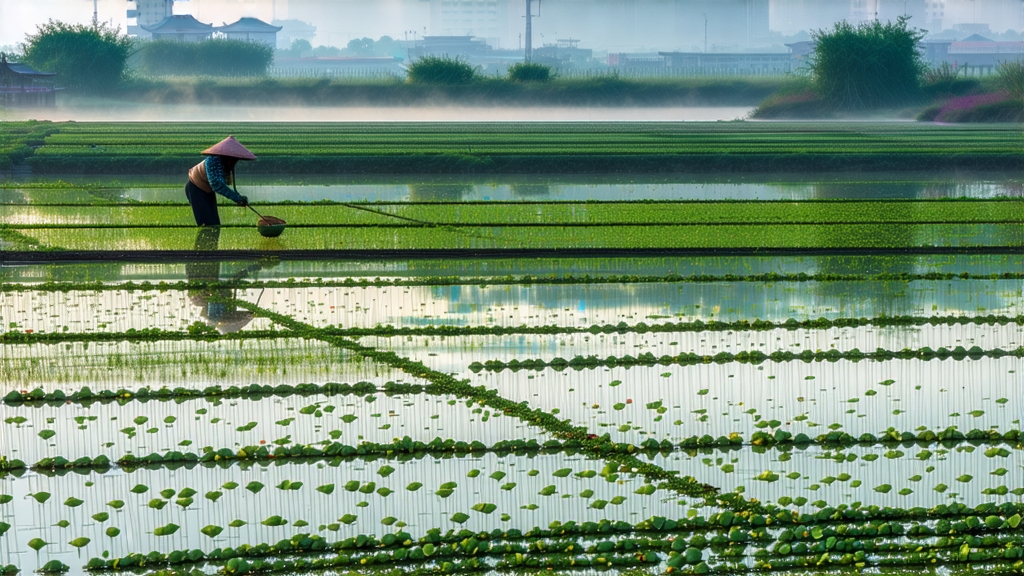
Biluochun, whose name literally means “Green Snail Spring,” is one of China’s ten most celebrated teas, yet it remains a delicate secret outside serious tea circles. Grown on the mist-lapped peninsulas of Dongting Mountain that jut into Taihu Lake in Jiangsu Province, this green tea carries the perfume of apricot blossoms and the mineral breath of limestone soil. Its tiny, tightly spiraled leaves—no bigger than a housefly’s wing—release a fragrance so intense that, when first shipped to the imperial court in 1699, the Kangxi Emperor is said to have renamed it “Scary Fragrance” (Xia Sha Ren Xiang) before deciding the moniker lacked elegance. Thus Biluochun was born, a name that evokes both the curled snail-like shape and the early-spring harvest window when the lake’s morning fog keeps the buds tender and sweet.
History
Although commercial production is documented only from the late Ming dynasty, local monks speak of Tang-era (8th-century) tea gardens on Dongting’s East and West peaks. The terroir is unique: the lake acts as a thermal regulator, cooling summer nights and warming winter dawns, while fruit trees—peach, plum, apricot—are interplanted among tea bushes, their roots sharing the same sandy loam. Bees shuttle between blossoms and leaf, and many tasters swear the tea’s natural florality is a botanical echo of this polyculture. By the Qing, Suzhou scholars had turned Biluochun into a cultural emblem, exchanging miniature caddies as refined gifts and composing poems that praised its “jade dew hidden in a spiral shell.”
Cultivars
The original seedstock is a small-leaf Camellia sinensis var. sinensis locally called “Xiao Ye.” Over centuries two clonal selections have emerged:
- Dongting Early Bud (Dongting Zaoya) – pushes shoots in mid-March, yielding a lighter, more orchid aroma.
- Wuniuzao (“Five Ox Early”) – harvestable five days sooner, with a brighter green color but slightly less complexity; often used for premium pre-Qingming lots when frost risk is high.
Both are still grafted onto old rootstocks using traditional tongue-cut grafting done during the tea’s winter dormancy, ensuring genetic fidelity without sacrificing terroir memory.
Plucking Standards
Only the “single bud with one unfolding leaf” is taken, and only between 5 a.m. and 9 a.m. while dew is still visible. Pickers wear cotton gloves to avoid hand oils, and bamboo trays lined with nettle cloth allow airflow that prevents premature oxidation. A skilled picker gathers barely 500 grams of fresh leaf in four hours—enough, once finished, for just 100 grams of dry tea.
Crafting the Spiral
The entire process must finish the same day; otherwise the delicate aromatics volatilize.
- Withering – trays rest in shade for 90 minutes, dropping moisture from 78 % to 72 % and softening cell walls.
- Pan-firing – woks are heated to 180 °C, then hand-rubbed with a slab of suet to season the metal; 250 g of leaf are tossed for 3–4 minutes in a motion called tui na that mimics a tai-chi push. Temperature drops to 120 °C as leaves begin to curl.
- Rolling & Spiraling – while still at 50 % moisture, the leaves are rolled against the wok’s rim with three fingers, forming the signature spiral. A master can judge readiness by ear: the rustle shifts from a wet hiss to a dry crackle.
- Second firing – 70 °C for 20 minutes sets the shape and locks in amino acids, especially L-theanine, which gives Biluochun its famed sweetness.
- Final bake – charcoal embers at 50 °C perfume the tea for 40 minutes using mao bamboo baskets. The resulting moisture is 4–5 %, yet the leaves remain jade-green rather than the yellow-green seen in many other Chinese greens.
Grades
Industry jargon sorts Biluupochun into seven grades, but exporters usually see three:
- Supreme (Toucai) – 6,000 buds per 100 g, plucked pre-Qingming; liquor is almost colorless yet explosively fragrant.
- Grade 1 – 4,000 buds per 100 g, picked before April 15; balanced cup with lingering rock-sugar sweet.
- Grade